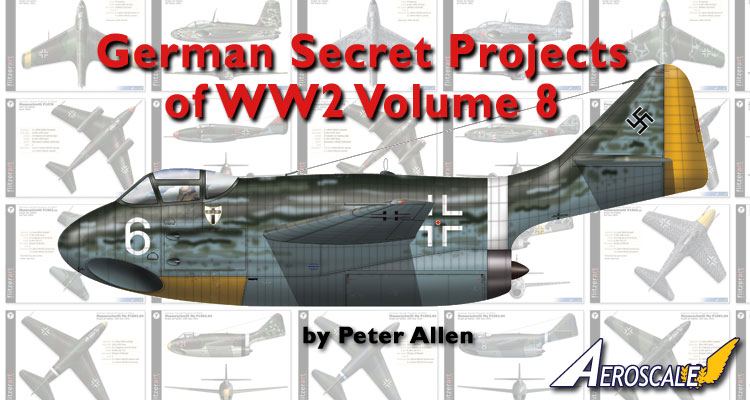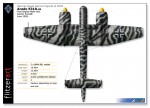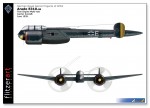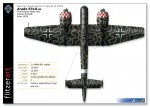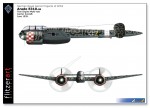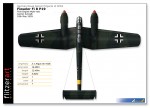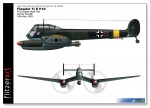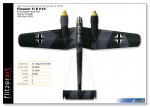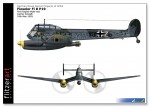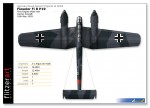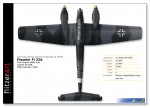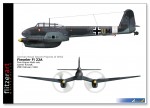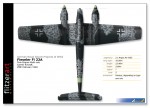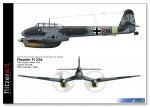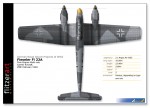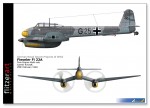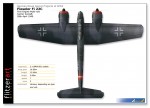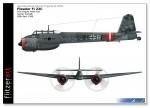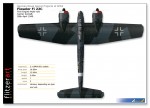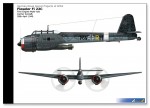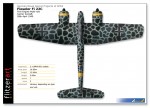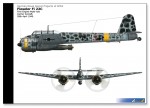German Secret Projects of WW2 Volume 8
6
Comments
German Secret Projects of WW2 Volume 8
When I started Volume 8 I had no intention of repeating the size of the previous one. Rather, I planned to keep it to a much more moderate collection of around 10 aircraft spread over 60 plates or so, but these things tend to gain a life or momentum of their own and it grew anyway. Not quite the 100 plates of Volume 7 but almost.One reason being the inclusion of the first section, which looks at some naval aircraft projects. Secret Projects’ site member Wurger contacted me suggesting I take a look at his thread with a view to doing some profiles. Wurger, Justo Miranda and via Justo, Ingolf Meyer, had all provided many drawings and details of aircraft that I had not seen before. So, as I had not done many naval aircraft since Rowan’s (Merlin) heavily influenced Volume 4 in my first series, I thought it was probably time I did.
Section 2 is the usual variety of old and new profiles and I have included some profiles of the Blohm and Voss P178. These were mistakenly omitted from an earlier volume so have added them to this.
Section 1 - Naval Secret Projects
Twin-engine Multi Role Carrier AircraftOnce Hitler came to absolute power, he wasted no time in implementing long made plans to enlarge and strengthen Germany’s military might across all forces. For the navy it was planned to build a large fleet of warships to include at least 3 aircraft carriers. So in 1935 began the Reich’s aircraft carrier building programme starting with the first carrier, the Graf Zeppelin. It was ordered in November 1935, laid down in December 1936 and launched in December 1938, but over the coming years the programme’s priority status continually fluctuated between high and low due to the effect of the war on the Reich. Therefore, the corresponding effect on the project aircraft resulted in none of them reaching production.
For the most part, aircraft would have been adapted from existing types or those new in service, such as the Messerschmitt Bf109, Focke Wulf 190 etc; in much the same way the British developed the Seafire from the Spitfire. However the RLM also saw a need for more bespoke carrier based aircraft designs unique to the navy. One such requirement was for a twin engined multi-role aircraft. Various aircraft companies provided designs including Arado and Fieseler with some of their proposals featured here.
Arado E310
The E310 was basically a navalised version of the E240. I do not have much detail and information concerning the E310 but I’m sure it would read very similar to that of the E240.
The E240 represented one of the most modern aircraft designs at the time using all of the most modern construction techniques available at the time. It was designed to be fast and have a high altitude capability. A key feature was its adaptability to use a wide range of power plants. The RLM ordered 6 E240 prototypes, each powered by a different pair of power plants for assessment. By all accounts the Arado prototypes were of a very high quality and superb craftsmanship. And in trials the promise of high altitude and fast speed was encouraging but there were major issues with flying characteristics.. The 3rd prototype was delivered to a special reconnaissance unit for operational evaluation. Oberst Siegfried Knemeyer flew several un-armed sorties over England where its high speed and high altitude qualities avoided detection.
However generally speaking the poor flying characteristics persisted and continued to prove a great problem. Arado spent a great deal of development time and effort attempting to eradicate them, but no matter what was tried the problems were never successfully eradicated.
There were a number of designs for the E310 that echoed those of the E240.
Fieseler Fi 8 P19
Fieseler produced a number of designs between 1939 and 1942. The first of which was the Fi 8 P19. It featured a cranked wing with the engines mounting in the bottom of the ‘V’. The extensively glazed, 2-man cockpit was well forward and was quite deep and narrow, with the tail was long and slender. It reminds me of the Handley Page Hampden in some ways. I have no further data for this aircraft.
Fieseler Fi P22A
Fieseler returned to the RLM in 1942 with the P22A design. It retained a similar cranked wing and engine arrangement as seen in the earlier Fi8 P19 design but had a more conventional cockpit layout and a solid nose housing the armament. The tail was also of a more conventional fin and tail plane arrangement, with the fin being slightly ahead of the tail planes. I have no further data for this aircraft.
Fieseler Fi P22C
Fieseler quickly followed the A with the C. The C saw the adoption of more powerful choice of engines and the cranked wing was replaced with a more conventional one with straight inner sections and while the outer sections included a small amount of dihedral. I have no further data for this aircraft.
Comments
Many thanks to Rowan.
I missed 2 whole descriptive parts of the text. Thanks
Peter
APR 11, 2011 - 02:05 AM
Hi Peter
No worries, but I'm relieved I wasn't going nuts when I thought something was missing! Many thanks for submitting such a great article.
All the best
Rowan
APR 11, 2011 - 09:17 AM
Great work once again from you, Peter. Very inspirational.
Thanks for sharing.
APR 11, 2011 - 12:40 PM
Many thanks Jesper.
Glad you like them.
A few bombers mixed in next time.
Brilliant job by Merlin as per usual.
Peter
APR 13, 2011 - 02:49 AM
Copyright ©2021 by Peter Allen. Images also by copyright holder unless otherwise noted. The views and opinions expressed herein are solely the views and opinions of the authors and/or contributors to this Web site and do not necessarily represent the views and/or opinions of AeroScale, KitMaker Network, or Silver Star Enterrpises. Images also by copyright holder unless otherwise noted. Opinions expressed are those of the author(s) and not necessarily those of AeroScale. All rights reserved. Originally published on: 2011-04-10 00:00:00. Unique Reads: 29302




